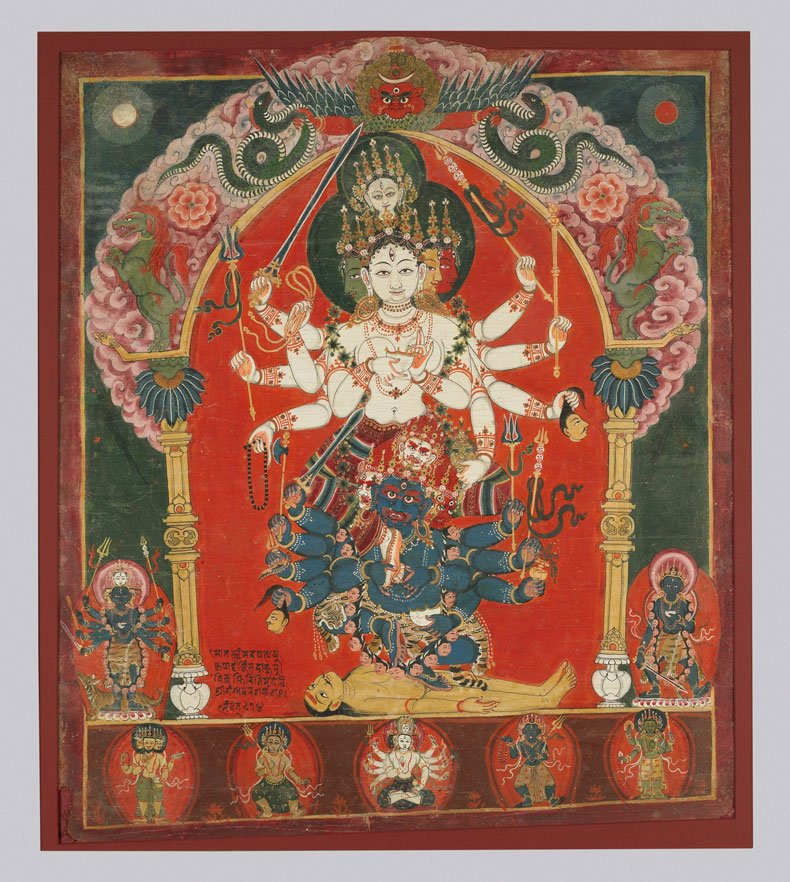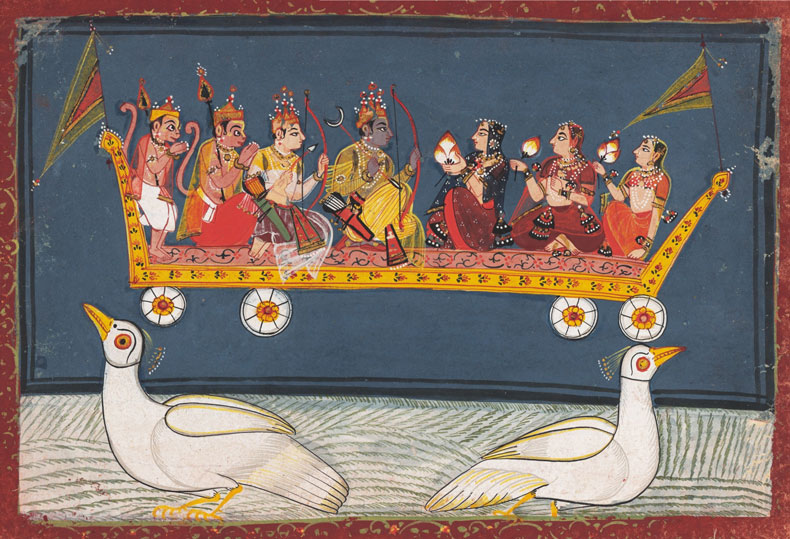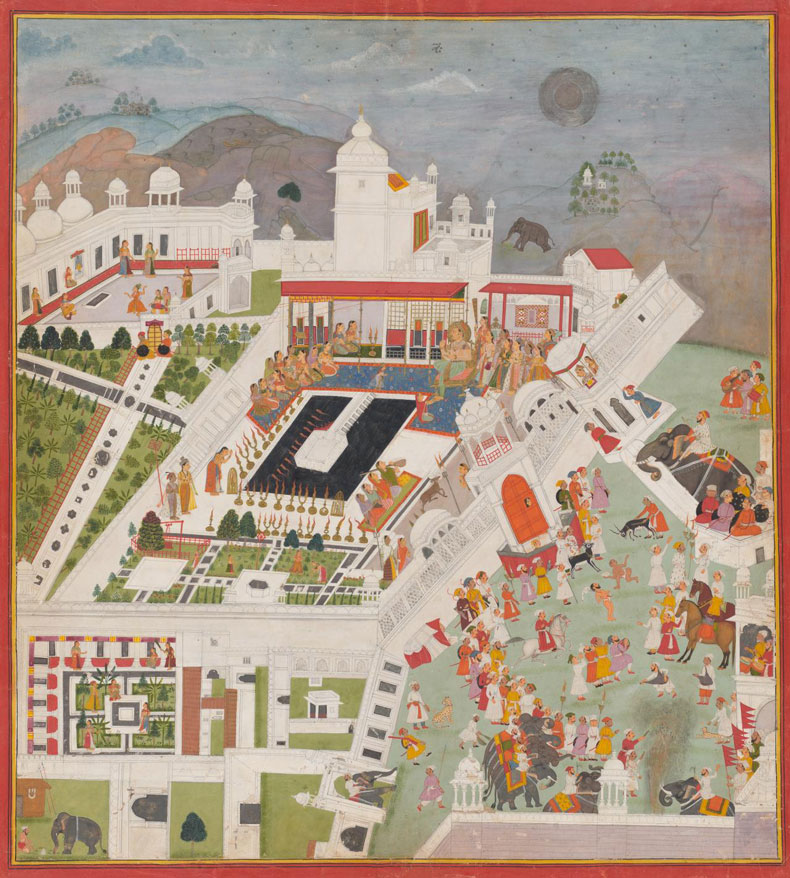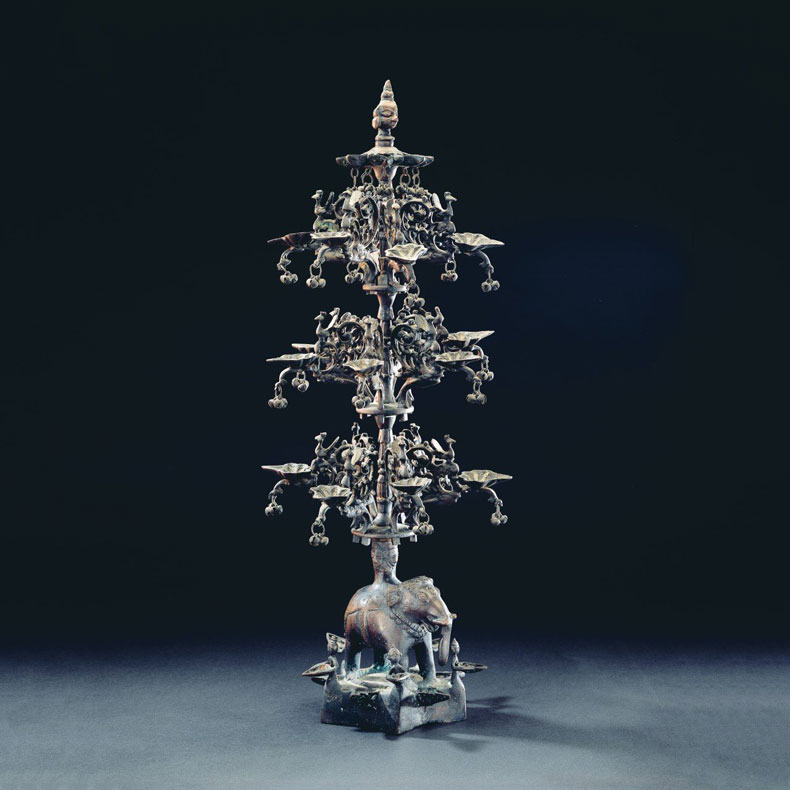
 ‘Four things to see’ is sponsored by Bloomberg Connects, the free arts and culture app. Bloomberg Connects lets you access museums, galleries and cultural spaces around the world on demand. Download the app here to access digital guides and explore a variety of content.
‘Four things to see’ is sponsored by Bloomberg Connects, the free arts and culture app. Bloomberg Connects lets you access museums, galleries and cultural spaces around the world on demand. Download the app here to access digital guides and explore a variety of content.
Each week we bring you four of the most interesting objects from the world’s museums, galleries and art institutions, hand-picked to mark significant moments in the calendar.
Diwali, also known as the Festival of Lights, is one of the most significant events in the Hindu calendar, symbolising the triumph of light over darkness and good over evil. Originating in ancient India, this festival, widely celebrated over five days, commemorates a number of mythological events, including the return of Lord Rama to his birthplace, Ayodhya, after his defeat of the demon king Ravana. Celebrated by more than a billion people worldwide, from India to Nepal and throughout the Indian diaspora, Diwali brings communities together through vibrant festivities. Homes are adorned with intricate designs called rangolis and illuminated by diyas (oil lamps) and candles, creating a warm and welcoming atmosphere. Fireworks light up the night sky while families gather to exchange gifts and savour festive sweets. It is all intended to be a joyous celebration of harmony and hoped-for prosperity.
Here we explore four objects that capture different aspects of this festival and the mythology behind it. Happy Diwali!
Siddhi Lakshmi (1694), unknown artist, Nepal. Rubin Museum of Himalayan Art. Photo: David De Armas/Rubin Museum of Himalayan Art (2012)

Siddhi Lakshmi (1694), unknown artist, Nepal
Rubin Museum of Himalayan Art
The goddess Siddhi Lakshmi is, quite literally, the epitome of success: ‘Siddhi’ means accomplishment and Lakshmi is the goddess of prosperity. This late 17th-century rendering of her is typical of Nepali paintings of the time, with its surfeit of detail and depictions of flora and fauna. Lakshmi’s feet are saved from touching the ground by a tower of other deities: she is atop Aakash Bhairava, god of the sky, who is in turn bestride the dark-hued, formidably strong god Vajrabhairava. Find out more on the Bloomberg Connects app by clicking here on your mobile device, or by scanning the QR code at the bottom of this page.
Rama and Sita with Lakshmana returning to Ayodhya (mid 17th century), unknown maker, Malwa School, Central India. National Museum, New Delhi

Rama and Sita with Lakshmana returning to Ayodhya (mid 17th century), unknown maker, Malwa School, Central India
National Museum, New Delhi
This beautifully coloured mid 17th-century painting captures a pivotal moment from the epic Ramayana, celebrating the triumphant return of Rama, Sita and Lakshmana to Ayodhya (now a heavily contested site for Hindus and Muslims). Riding the celestial chariot Pushpaka, the heroes return after vanquishing the ten-headed demon king Ravana. The scene reflects the Diwali tradition of lighting lamps to guide the royal couple home, symbolising the victory of good over evil and the illumination of knowledge. Click here to find out more.
Diwali Celebrations at Kotah (c. 1690), unknown artist, Udaipur. National Gallery of Victoria, Melbourne

Diwali Celebrations at Kotah (c. 1690), unknown artist, Udaipur
National Gallery of Victoria, Melbourne
This exquisite tamasha painting – a genre comprising panoramic scenes of courtly life – depicts a festive celebration in a Rajput palace during Diwali. Created in Udaipur, Rajasthan, with opaque watercolour and gold paint on paper, the lively scene features musicians, dancers and all-round revelry. With oil lamps and fireworks illuminating the night, this artwork encapsulates the festival’s essence: the triumph of light over darkness and the community’s devotion to Lakshmi, the goddess of wealth and prosperity. Click here to find out more.
Bronze oil lamp (18th century), unknown maker, Andhra Pradesh. Fowler Museum at UCLA, Los Angeles

Bronze oil lamp (18th century), unknown maker, Andhra Pradesh
Fowler Museum at UCLA, Los Angeles
This intricate 18th-century bronze oil lamp from Andhra Pradesh showcases a magnificent ‘tree of life’ motif, perched on the back of an elephant. The three-tiered design, 68cm high, features metal rings, lamps, decorative foliage, fruit and birds, with a likeness of a female figure at its apex. During Diwali, lamps serve as beacons, inviting the goddess Lakshmi into homes and embodying protection, renewal and the celebratory spirit of the festival. Click here to find out more.
![]() ‘Four things to see’ is sponsored by Bloomberg Connects, the free arts and culture app. Bloomberg Connects lets you access museums, galleries and cultural spaces around the world on demand. Download the app here to access digital guides and explore a variety of content or scan the QR code.
‘Four things to see’ is sponsored by Bloomberg Connects, the free arts and culture app. Bloomberg Connects lets you access museums, galleries and cultural spaces around the world on demand. Download the app here to access digital guides and explore a variety of content or scan the QR code.


